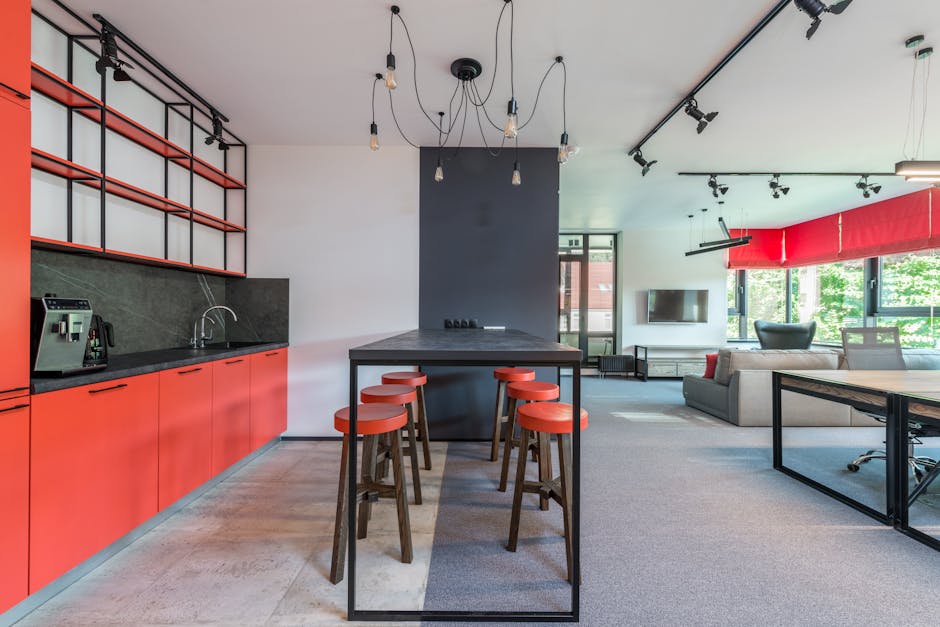Shaping the Office of Tomorrow: Empowering Employees in Workplace Decision-Making
“In the evolving landscape of work, involving employees in shaping their workplace experience is crucial. This article explores the benefits of employee participation in decision-making, strategies for implementation, and how technology can support this collaborative approach to create the office of tomorrow. ”

The Evolving Workplace Landscape
In today's rapidly changing work environment, the concept of a workplace has transcended traditional boundaries. No longer confined to a physical office, work can happen anywhere – from the comfort of one's home to a bustling café or a serene beach. This shift has brought about new challenges and opportunities for organizations striving to create engaging and productive work environments.

As companies grapple with hybrid and remote-working models, the focus has shifted towards crafting exceptional workplace experiences that cater to employees' diverse needs and preferences. The key to success in this new era lies in involving employees in the decision-making process when shaping the workplace of tomorrow.
The Power of Employee Involvement
Involving employees in workplace decisions is not just a feel-good initiative; it's a strategic move that can yield significant benefits for organizations. Here's why:
-
Enhanced Engagement: When employees have a say in shaping their work environment, they feel more invested in the company's success. This sense of ownership translates to higher levels of engagement and productivity.
-
Improved Satisfaction: By considering employees' preferences and needs, organizations can create workspaces that truly cater to their workforce, leading to increased job satisfaction and retention.
-
Innovative Solutions: Employees often have unique insights into the day-to-day operations and challenges of their work. Their input can lead to innovative solutions that might otherwise be overlooked.
-
Stronger Company Culture: Collaborative decision-making fosters a culture of trust, transparency, and mutual respect between management and employees.
Strategies for Empowering Employees in Workplace Decisions
To effectively involve employees in shaping the workplace, organizations can implement the following strategies:
1. Encourage Open Communication
Create channels for employees to share their ideas, concerns, and feedback about the workplace. This could include regular surveys, town hall meetings, or dedicated suggestion platforms.
2. Form Cross-Functional Teams
Assemble diverse teams from different departments to collaborate on workplace initiatives. This ensures a wide range of perspectives are considered in decision-making processes.
3. Implement Pilot Programs
Before rolling out major changes, test new ideas through pilot programs. This allows employees to experience and provide feedback on proposed changes before full implementation.
4. Provide Flexibility and Choice
Offer employees options in how and where they work. This could include flexible schedules, remote work opportunities, or the ability to choose from different workspace configurations.

5. Recognize and Reward Contributions
Acknowledge and celebrate employees who contribute valuable ideas or actively participate in shaping the workplace. This encourages ongoing engagement and innovation.
Leveraging Technology to Support Employee Involvement
Technology plays a crucial role in facilitating employee participation in workplace decisions. Here are some ways organizations can leverage technology:
-
Collaboration Platforms: Utilize digital tools that enable seamless communication and idea-sharing across teams and locations.
-
Workplace Analytics: Employ data-driven insights to understand how employees use spaces and resources, informing decision-making processes.
-
Booking Systems: Implement user-friendly systems for reserving workspaces, meeting rooms, and other resources, giving employees control over their work environment.
-
Feedback Apps: Use mobile apps or web-based platforms that allow employees to provide real-time feedback on workplace experiences.
-
Virtual Reality: Explore VR technology to prototype and test new office layouts or configurations before implementation.
Overcoming Challenges in Employee-Driven Workplace Design
While involving employees in shaping the workplace offers numerous benefits, it's not without challenges. Here are some potential hurdles and strategies to overcome them:
-
Balancing Diverse Opinions: With a variety of preferences and needs, finding consensus can be challenging. Implement a structured decision-making process that weighs different perspectives fairly.
-
Maintaining Consistency: Ensure that employee-driven changes align with the company's overall goals and brand identity. Establish clear guidelines and parameters for workplace initiatives.
-
Managing Expectations: Be transparent about what is feasible and what isn't. Clearly communicate the reasons behind decisions, especially when certain suggestions can't be implemented.
-
Avoiding Decision Paralysis: While input is valuable, too much consultation can slow down decision-making. Set clear timelines and decision-making processes to maintain momentum.
The Future of Work: A Collaborative Vision
As we look towards the future of work, it's clear that the most successful organizations will be those that embrace a collaborative approach to workplace design and management. By involving employees in shaping their work environment, companies can create spaces that are not only functional and efficient but also inspiring and tailored to the needs of their workforce.

The office of tomorrow is more than just a physical space; it's a dynamic ecosystem that adapts and evolves with its occupants. By empowering employees to be co-creators of their workplace experience, organizations can foster innovation, boost productivity, and create a thriving culture that attracts and retains top talent.
As we continue to navigate the changing landscape of work, let's remember that the most valuable insights often come from those who inhabit our workspaces every day. By listening to and acting on employee input, we can shape workplaces that are truly fit for the future.